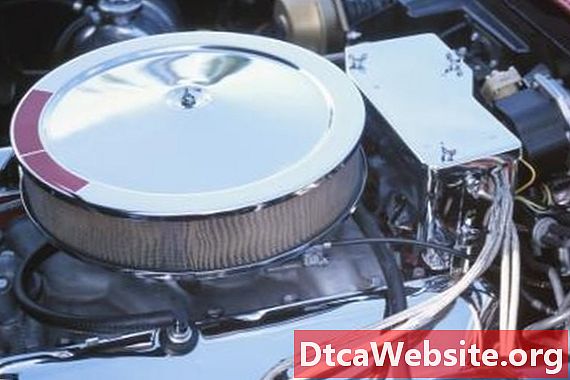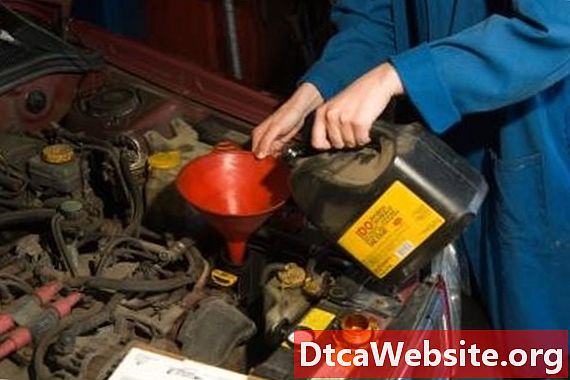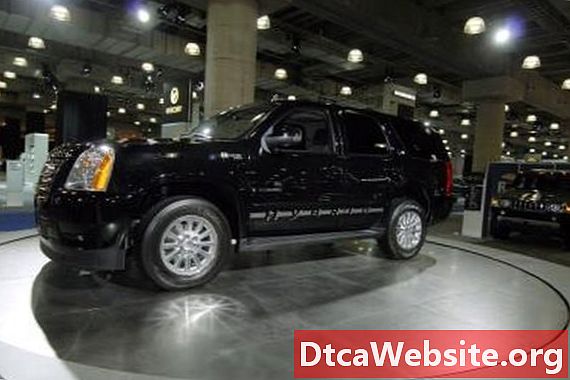
Contenu

The Chrysler-owned 383-cubic-inch V-8 Dodge and Plymouth engine was a high-performance powerplant that played a role in the muscle car era of the 1960s and early 1970s before the 426 Hemi rendered it obsolete. The 383 was not initially intended to be used as a race engine but to power the big Chryslers of the late 1950s and early 1960s.
Two Versions
The 383 was introduced in 1959 to be placed in the Chrysler Windsor and the Saratoga while the luxury Chrysler New Yorker and 300 Series received the slightly larger 413-ci V-8. The initial 1959 383s were raised block V-8s with a 4.030-inch bore and 3.750-inch stroke and four-barrel carburetor. This made the 345-horsepower 383 engine block slightly tall. For 1960, the dimensions were changed to a 4.250-inch bore and significantly reduced 3.380-inch stroke, which converted the engine to a lower profile. In all, 47,219 Windsors and Saratogas were produced with the 383 in 1959 and 52,349 in 1960.
High-Performance
Two horsepower ratings were available as Dodge entered the muscle car wars in 1962 and 1963 by following the 1962 Chevrolet Impala Super Sport powered by a 409-ci V-8. Dodge’s 383 could be ordered with a two-barrel carburetor to generate 305 horsepower or the four-barrel carb that provided 330 horsepower. Special heads ordered on the 383 along with the four-barrel carb and manual choke could boost the horsepower as high as 343, according to Allpar.com.
Overshadowed
There’s no doubt that the 383 was a big engine capable of producing a massive amount of horsepower if tuned right, but by the late 1960s, it was overshadowed by the rival 413, the 426 Wedge V-8, the 440 Magnum, the 440 Six Pack V-8s and later the legendary 426 Hemi. The 440s, in particular, were marketed as affordable high-performance engines combined with racing-style graphics and accessories on the Plymouths. The 383 got lost in the shuffle and was primarily known for powering police cruisers, station wagons and trucks.
Power Loss
The 383 reached its peak in power output in 1970 with 335 horsepower, a four-barrel Holley carb and 9.5:1 compression ratio. The following year all Detroit automakers detuned their engines as federally mandated emission standards and rising fuel costs made high-performance engines on street passenger cars impractical. Horsepower for the 383 was reduced to 300 in 1971. The 383 also was the weakest of the big Chrysler engines. The 426 Hemi wielded 425 horsepower in 1970 and 1971, and the 440 and 440 Six Pack had 370 and 385, respectively.
Police Engines
The 383 served as a mainstay for police prowl cars. From 1967 to 1971, most law enforcement agencies equipped their Dodge Coronets and Polaras and Plymouth Furys and Belvederes with high-performance 383s. The Dodge cruisers could be equipped with two versions of the 383 with horsepower ratings of 270 or 325. Power was boosted to 330 in 1969 for the Coronet pursuit cars. Even in 1971, when overall power was reduced on civilian cars, the Coronet police pursuit cars, Dodge Polara, and Plymouth Satellite and Fury still received 330-hp 383s.


